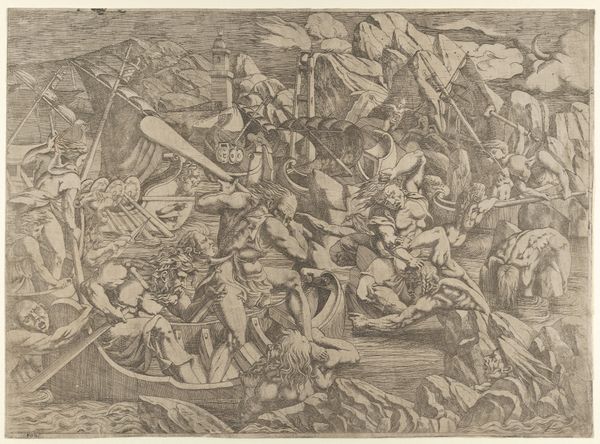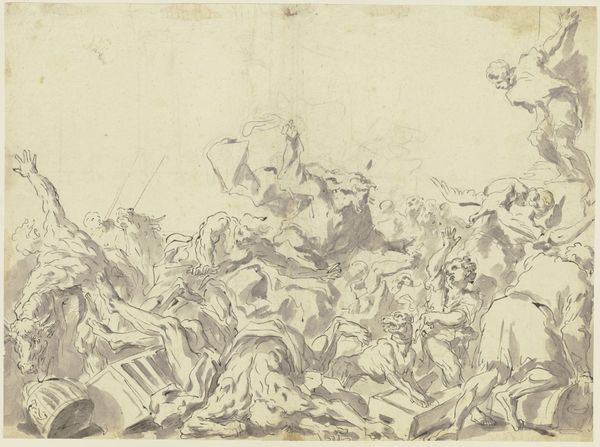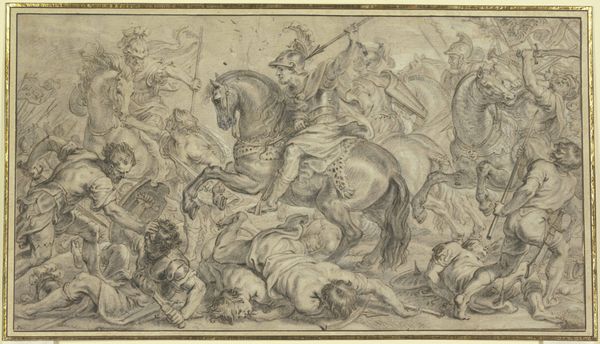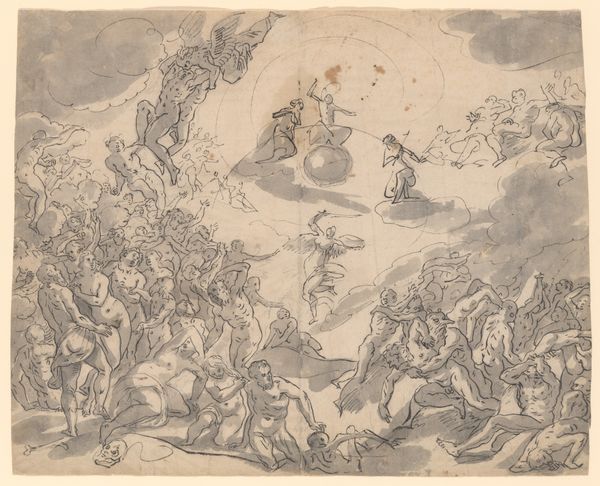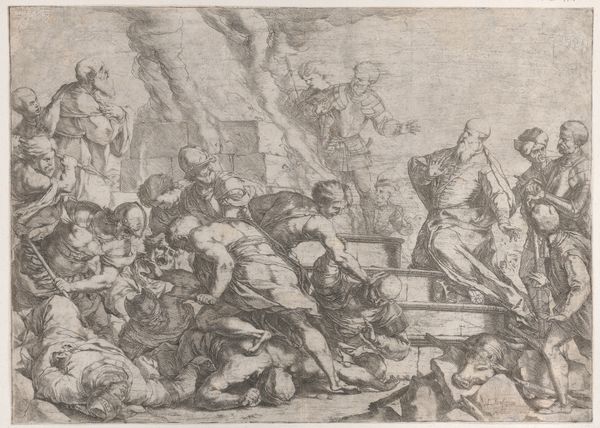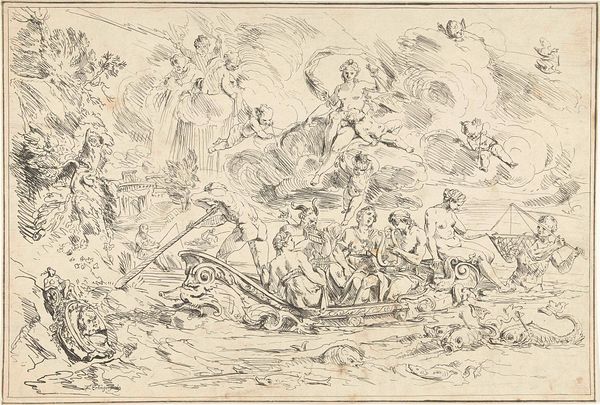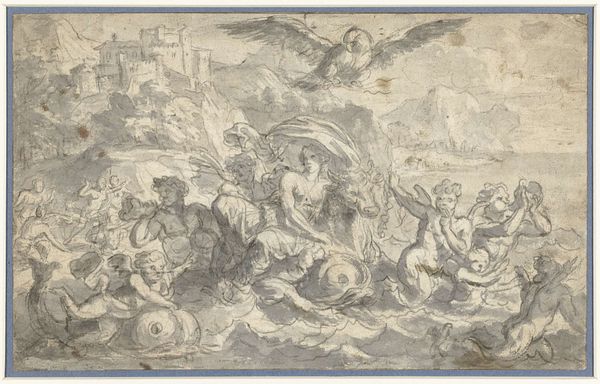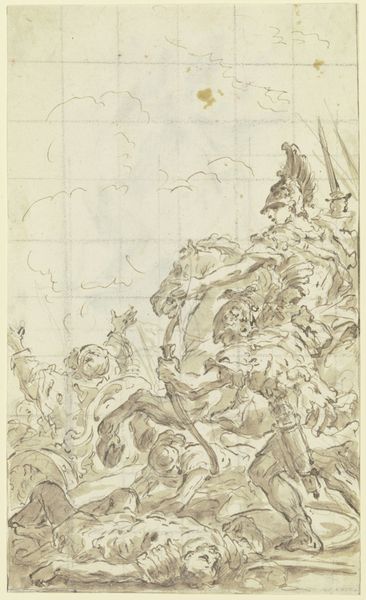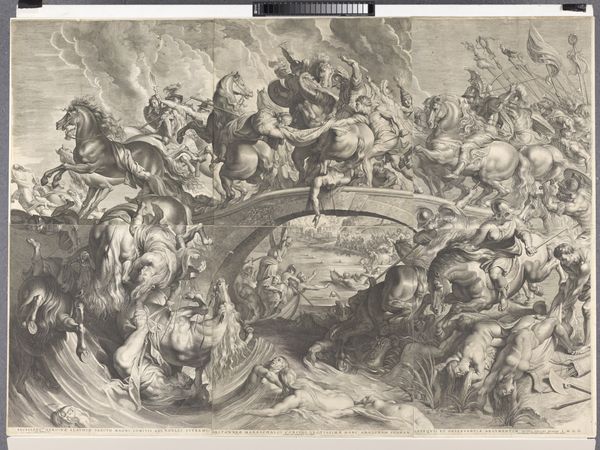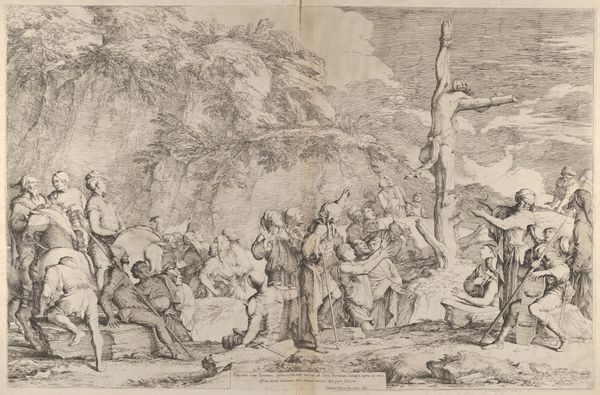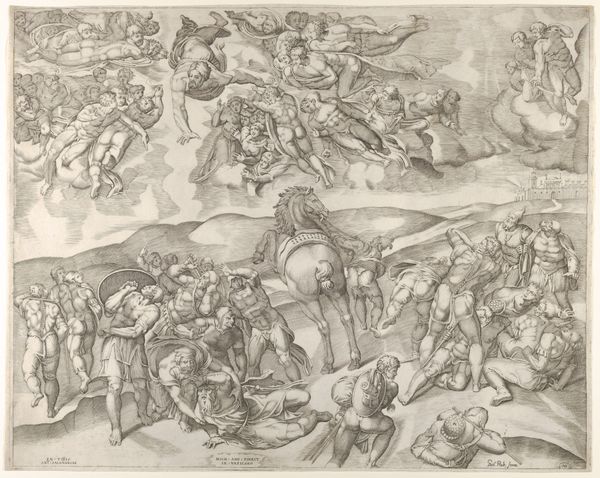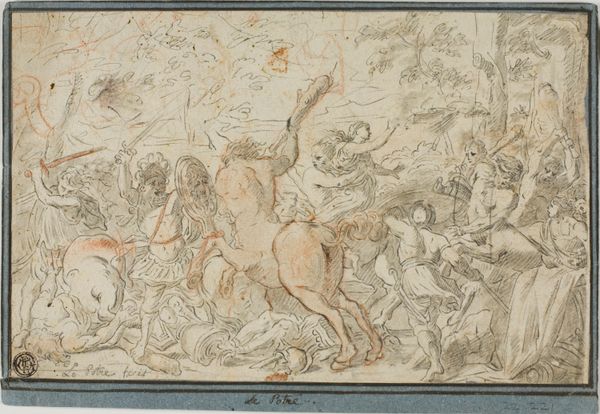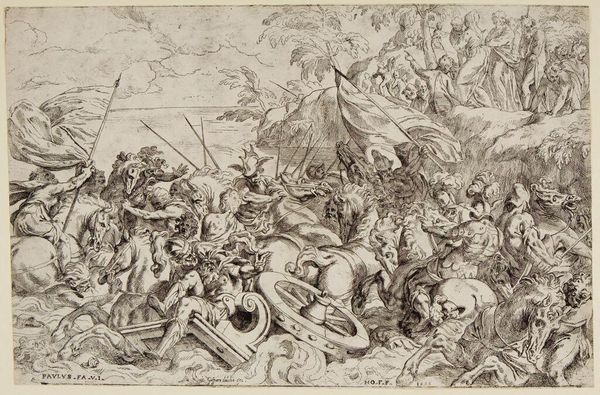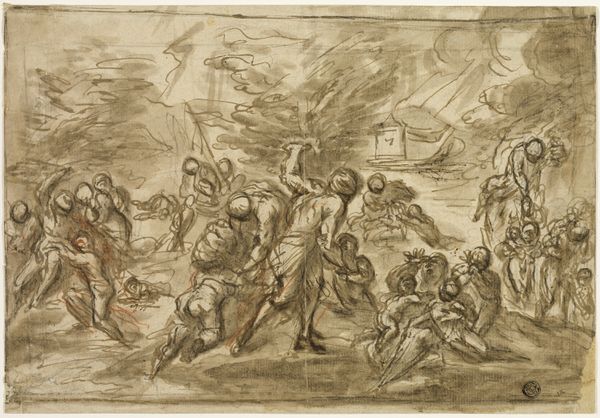
drawing, print, ink, engraving
#
drawing
#
ink drawing
#
narrative-art
# print
#
pen sketch
#
pencil sketch
#
mannerism
#
figuration
#
ink
#
line
#
history-painting
#
engraving
Dimensions: Sheet (Trimmed): 21 5/8 × 13 3/4 in. (55 × 34.9 cm)
Copyright: Public Domain
Editor: We’re looking at "The Crossing of the Red Sea," an ink and engraving print made around 1583 by Orazio Farinati. The composition is very dynamic, with a lot of figures crammed into the scene. What do you see in this piece, especially given its historical context? Curator: This isn't just a historical scene; it's a potent allegory of liberation and struggle against oppression. Consider the period – the late 16th century. Religious wars were raging, and the Exodus story resonated deeply as a symbol of resistance to tyranny. How do you think the choice of engraving as a medium, allowing for wider distribution of this image, plays into this theme? Editor: I guess that means it was easier to share ideas and perhaps, resistance, to a broader audience, particularly to people who might identify with the oppressed. So, you’re saying this wasn't just art for art's sake? Curator: Exactly. Farinati, working in a Mannerist style, emphasizes drama and emotional intensity, furthering this agenda. The crowded composition and swirling lines mirror the chaos and fear of the fleeing Israelites and the pursuing Egyptians, reflecting real human suffering. Do you notice any elements that stand out in relation to themes of gender, power, or societal hierarchies? Editor: Now that you mention it, there are not that many women depicted… And, now I see, it places emphasis on male figures and warriors. Maybe reflecting existing social structures. Curator: Precisely! This artwork offers us a glimpse into the complex relationship between art, faith, and social commentary in a turbulent era. It serves as a poignant reminder that narratives of liberation often have specific contexts of marginalization to reflect upon. Editor: That is helpful and really gives me something to think about as I consider other art from the period!
Comments
No comments
Be the first to comment and join the conversation on the ultimate creative platform.
